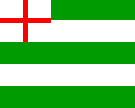
This page is part of © FOTW Flags Of The World website
Dictionary of Vexillology: A (Alfaquaquus - Appointment Flag)
Last modified: 2016-05-23 by rob raeside
Keywords: vexillological terms |
Links: FOTW homepage |
search |
disclaimer and copyright |
write us |
mirrors
On this page:
- ALFAQUAQUUS
- ALFERES (or ALFEROUS)
- ALLEGORY (or ALLEGORICAL)
- ALL SEEING EYE OF GOD
- ALLUSIVE ARMS
- ALTEMA
- ALTERNATIVE FLAG/ENSIGN (or ALTERNATE FLAG/ENSIGN)
- AMALGAM (or AMALGAM LANGUAGE) FLAGS
- AMARANTH
- AMBASSADORIAL (or AMBASSADOR’S) FLAG
- AMERICAN WAR MOTHERS FLAG
- ANCHOR FLAG
- ANCIENT
- ANCIENT CROWN
- ANCIENT SHIP
- ANDREEVSKI Ĭ (ANDREEVSKY or AHNDREEYEFSKEEY)
- ANGLED POLE
- ANGLED SWALLOW-TAIL
- ANKH (or ANKH CROSS)
- ANNULET
- ANNULO
- ANSHENT
- ANSWERING PENNANT
- ANTENNA FLAG
- ANTESIGNORY (or ANTESIGNANUS)
- ANTI-ALIASING
- ANTICIPATORY FLAG
- ANTI-HERALDRY (or ANTIHERALDRY)
- ANTIQUE CROWN
- ANTIQUE SHIP
- ANTLER(S)
- ANTLERED
- APPLIQUÉ
- APPOINTMENT FLAG
- ALFAQUAQUUS
- The medieval term, now obsolete, for a person who is entitled to carry his
banner erect on the King’s highway.
This word is recorded as having a Spanish origin (which remains unproven) however, the extent to which it was used in English medieval manuscripts is not known.
- ALFERES (or ALFEROUS)
- A late 17th early 18th Century term, now obsolete, for a
‘standard bearer’.
![[alferes]](../images/v/vxt-d2526a.jpg)
![[alferes]](../images/v/vxt-d2526b.jpg)
Alferous/Standard Bearers C17th (Wikipedia)Notes
a) It is suggested that the alternative form was sometimes used in medieval manuscripts
b) There is a possible relationship between this term and the Spanish military rank of alférez or ensign (see also ‘ensign 5)’. - ALLEGORY (or ALLEGORICAL)
- The term for a pictorial illustration with a symbolic meaning, and
whose imagery is usually intended to convey a moral and/or political message - see
‘anti-heraldry’.
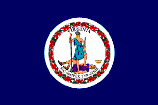
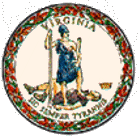


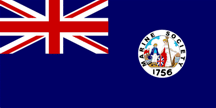
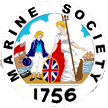
Flag and Seal of the State of Virginia, US (fotw and state symbols); Jack and Command Flag of the Batavian Republic 1797, The Netherlands (fotw); Badge and Flag of TS Warspite, UK (fotw) - ALL-SEEING EYE OF GOD
- See ‘Eye of God’.
![[Goppisberg]](../images/v/vxt-d1161.gif)
Flag of Goppisberg Switzerland (fotw) - ALLUSIVE ARMS
- See ‘canting’.
![[Magdeburg]](../images/v/vxt-d1128.gif)
![[Magdeburg]](../images/v/vxt-d1128a.gif)
Flag and Arms of Magdeburg (or Maiden-Town), Germany (fotw) - ALTEMA
- A medieval term, now obsolete, for the upper part of the cart upon which the standard was placed (see also ‘carrocium’, ‘gajardus’ and ‘standard 6)’).
- ALTERNATIVE FLAG/ENSIGN (or ALTERNATE FLAG/ENSIGN)
- The term used to describe any flag or ensign (either official or unofficial) being presented
as an alternative to that which is generally accepted (or officially established) for a particular role.
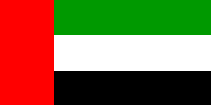



National Flag/Civil Ensign as regulated, and Alternative Civil Ensign of the United Arab Emirates (fotw); National Flag/Civil Ensign as regulated, and Alternative Civil Ensign of Nicaragua (fotw) - AMALGAM (or AMALGAM LANGUAGE) FLAGS
- See ‘linguistic flags’ (also ‘combined flag’).
- AMARANTH
- See ‘shades of tincture’ in ‘Appendix III’.
- AMBASSADORIAL (or AMBASSADOR’S) FLAG
- See ‘diplomatic flags’.
![[ambassadorial flag example]](../images/v/vxt-d035.gif)
Flag of an Ambassador, Chile - AMERICAN WAR MOTHERS FLAG
- See ‘service flag 3)’.
- ANCHOR FLAG
- In UK usage, a term for the flag of the Lord High Admiral, and one the three
masthead flags flown (since c1660) when the monarch is aboard a naval vessel –
the Lord High Admiral’s or Admiralty flag – but see notes below (also
‘fouled anchor’ and
‘masthead flag’).
![[Lord High Admiral]](../images/v/vxt-d933a.gif)
![[Lord High Admiral]](../images/v/vxt-d1984.gif)
![[Lord High Admiral]](../images/v/vxt-d933b.gif)
![[Lord High Admiral]](../images/v/vxt-d933c.gif)
Lord High Admiral 1660, England (fotw); Lord High Admiral 1685 – 1688, England (fotw); The Board of Admiralty 19th Century, UK (fotw); Current Pattern, UK (fotw)Notes
a) This office reverted to the crown in 1964 and HM The Queen was, for many years, her own Lord High Admiral (the present incumbent is HRH The Duke of Edinburgh), however, during the preceding two hundred and fifty years the office was most often “in commission” and this flag (or variations thereof) was also flown by the Board of Admiralty – see ‘admiralty flag 2)’.
b) The three masthead flags flown when the monarch is aboard a naval vessel are traditionally that of the Lord High Admiral at the fore, the royal standard at the main and a union jack at the mizzen (see also ‘foremast’, ‘main’ and ‘mizzen’). - ANCIENT
- 1) In heraldry, a coat of arms or charge formerly in use but now replaced by another design which is then termed modern such as, for example, Austria ancient and Austria modern – see ‘modern’.
- 2) In vexillology, a 16th/17th Century term, now wholly obsolete, for a ship’s stern mounted ensign, or military colour whether displayed ashore or afloat - an anshent or auncient (see also ‘colour 2)’, ‘deck flags)’), ‘ensign 1)’, ‘pavisade’, and ‘streamer 2)’.
- 3) A 16th/17th Century term, now wholly obsolete, equivalent to, and with
the same duties as, the later but also obsolete army rank of ensign (see also
‘ensign 3)’ and
‘ensign 4)’).
![[ancient example]](../images/v/vxt-d012.gif)
![[ancient example]](../images/v/vxt-d1826a.gif)
![[modern example]](../images/v/vxt-d1826b.gif)
![[English 1590 example]](../images/v/vxt-d1933.gif)
From left: Austria Ancient, Austria Modern (fotw); France Ancient, France Modern (fotw); Ancient/Ship’s Ensign, English c1590 (Pete Loeser) - ANCIENT CROWN
- See ‘antique crown 2)’ and ‘coronet 1)’.
- ANCIENT SHIP
- In English heraldry the term for a (usually but not invariably) single-masted sailing ship, regardless of specific type – an antique ship – but see notes below.
![[ancient ship]](../images/v/vxt-d2601.gif)
![[ancient ship]](../images/v/vxt-d2601a.gif)
![[ancient ship]](../images/v/vxt-d2602.gif)
![[ancient ship]](../images/v/vxt-d2794a.gif)
![[ancient ship]](../images/v/vxt-d2794.gif)
Flag and Arms of Kostrena, Croatia (fotw); Flag of Hauts-de-Seine, France (fotw); Arms and Flag of Lisboa, Portugal (fotw)Notes a) A vessel with oars but more than one mast should be blazoned “galley” – see ‘galley’.
b) Single-masted Medieval sailing ships fall into a number of different categories of which two are separately defined herein under ‘cog 2)’ and ‘nef’.
c) This term can (and sometimes does) include sailing vessels with more than one mast as illustrated below – see ‘caravel’, ‘carrack’ and ‘galleon’. ![[ancient ship]](../images/v/vxt-d182.gif)
Jack of Trinity House
- ANDREEVSKI Ĭ (ANDREEVSKY or AHNDREEYEFSKEEY)
- See ‘St Andrew’s cross 3)’ and its following note.
![[Russian ensign]](../images/v/vxt-d1255.gif)
Russian ensign (fotw).Please note that Андреевский - Andreevskiĭ with alternative transliterations - is the Russian term for their naval ensign.
- ANGLED POLE
- See ‘outrigger pole’.
- ANGLED SWALLOW-TAIL
- See ‘chamfered swallow-tail’.
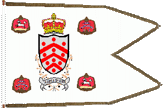
Guidon of the Royal Gloucestershire Yeomanry 1797, UK (fotw)
- ANKH (or ANKH CROSS)
- An ancient Egyptian cross-like symbol – an ankh cross or Egyptian cross (see also ‘cross tau’ in ‘appendix VIII’).
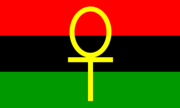


Flag used by the Music Group X Clan (fotw); Arms and Flag of Ribafria e Pereiro de Palhacana, Portugal (ICH and fotw) - ANNULET
- A ring-like charge in heraldry – see ‘ring 1)’.


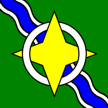
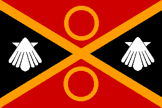
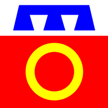
Flag and Arms of Wendezelle, (Germany fotw); Flag of Suraua, Switzerland (fotw); Flag of Grahamstown, South Africa (fotw); Flag of Middes, Switzerland (fotw) - ANNULO
- See ‘in annulo’.
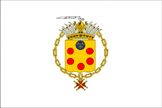
Flag of the Rulers of Tuscany, 1531-1737 (fotw) - ANSHENT
- See ‘ancient 2)’.
- ANSWERING PENNANT
- See ‘code pennant’.
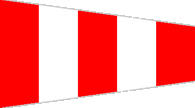
Code/Answering Pennant in the ICS (fotw) - ANTENNA FLAG
- A flag designed to be displayed from a vehicle’s radio antenna - see ‘car flag 2)’.
- ANTESIGNORY (or ANTESIGNANUS)
- A term, now obsolete, for the guard who precedes a standard (see also
‘standard 5)’).
Please note, it is suggested that the alternative form was used in medieval manuscripts.
- ANTI-ALIASING
- A computer graphics term used to describe the technique of giving low resolution flag illustrations a smoother appearance by colouring pixels at the border between two differently coloured surfaces with intermediate shades.
- ANTICIPATORY FLAG
- 1) A newly introduced term for a flag that displays (for patriotic or commercial reasons) any symbol or symbolism prior to official authorization.
- 2) See ‘flag of pretence’.
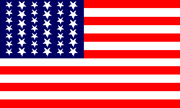
39 Star Flag of The United States 1839 (fotw)Please note that the 39 star of the United States, for example (and illustrated above), displays a symbol in advance of any official authorization, whereas a “flag of pretence”, for example the national flag of Comoros or naval ensign of Bolivia, shows one more star than they have provinces under their control.
- ANTI-HERALDRY (or ANTIHERALDRY)
- A term used to describe the design of those seals and emblems which do not contain
(and may have been specifically designed not to contain) heraldic symbolism – for example
the seals of many US states widely used on their flags, and the emblems of
most former Soviet-bloc states (see also
‘allegory’,
‘heraldry’,
‘emblem 2)’,
‘pre-heraldic’,
‘seal’,
‘seal flag’ and
‘state flag 2)’).
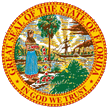




State Seal of Florida, US (fotw); State Seal of Virginia, US (ICH); National Symbol of France (ICH); Emblem of Soviet Russia 1956 – 1991 (fotw); Emblem of Yugoslavia 1963 – 1991 (fotw)Please note that this term has its origins in a rejection of heraldic symbolism and of all things having a connection to royalty or the nobility, with prominent early examples stemming from the American War of Independence and the French Revolution.
- ANTIQUE CROWN
- 1) Generically and in Continental European heraldry see ‘coronet’).
- 2) Specifically in English heraldry, a type of coronet that is generally (but not exclusively) composed
of a circlet with triangular rays - an ancient or Plantagenet crown.
![[antique crown]](../images/v/vxt-d1373.gif)
![[antique crown]](../images/v/vxt-d1631.gif)
![[antique crown]](../images/v/vxt-d1961.gif)
An English Heraldic Pattern Antique Crown (Parker); Flag of Newfoundland, Canada 1862 – 1872 (fotw); Flag of the Citizens of Guelph, Canada (Peter Orenski) - ANTIQUE SHIP
- See ‘ancient ship’.
![[antique ship]](../images/v/vxt-d2945.gif)
![[antique ship]](../images/v/vxt-d2946.gif)
Ensign and Burgee of the Royal Lymington Yacht Club, UK (fotw) - ANTLER(S)
- See ‘attire(s)’.
![[antlers]](../images/v/vxt-d476a.gif)
![[antlers]](../images/v/vxt-d476b.gif)
Arms and Flag of Draž, Croatia (fotw) - ANTLERED
- See ‘attired’.
![[antlered]](../images/v/vxt-d477.gif)
Flag of Heiden, Switzerland (fotw) - APPLIQUÉ
- (n & v) A method of flag manufacture in which one or more pieces of cloth are stitched on the field to form a design. This technique is often used where the design on the obverse differs from that on the reverse – but see ‘double appliqué’ and ‘single appliqué’ (see also ‘obverse’ and ‘reverse’).
- APPOINTMENT FLAG
- 1) In UK and some other military usage, that flag which corresponds to a particular position held, rather than to the rank of the officer who currently holds it - but see ‘positional flag’ (also ‘class flag’ and ‘rank flag 1)’).
- 2) See ‘distinguishing flag 1)’.
![[appointment flag example]](../images/v/vxt-d1599.gif)
![[appointment flag example]](../images/v/vxt-d016.gif)
Military Attaché, UK (Graham Bartram); RAF Station Commander, UK (Graham Bartram)
Introduction | Table of Contents | Index of Terms | Previous Page | Next Page
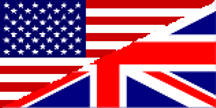


![[example]](../images/v/vxt-d1106.gif)

